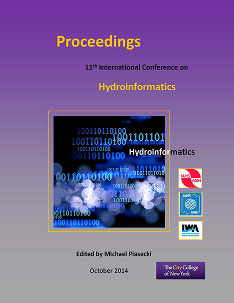Document Type
Presentation
Publication Date
8-1-2014
Abstract
The frequency, magnitude and impact of pluvial flooding events both in the UK and worldwide is forecast to increase due to: climate change (Butler and Davies 2011), the effects of urbanisation and urban creep (Semadeni‐Davies et al 2008) as well as aging drainage infrastructure (Ashley et al. 2004). Pluvial flood models (e.g. Leandro et al. 2008) are increasingly being used to assess flood risk, develop asset investment strategies and develop surface water management plans. However due to the nature of urban flood events, it is very difficult to calibrate and validate such pluvial flood models. In particular the rate of exchange between above and below ground systems is a source of considerable uncertainty in urban flood modelling (Djordjević et al, 2005). This work utilises a unique surface/subsurface model (as described in Rubinato et al. 2012a, and Rubinato et al. 2012b) at the University of Sheffield. The model consists of a pipe drainage network linked via a manhole to an urban surface with a slope 1:1000. Inflow and outflow to the above and below ground systems can be controlled and monitored independently in real time. The specific objective of this work is: - Experimentally quantify the interaction of flow between the below and above ground systems for a range of pluvial flooding conditions. Water depth, flow rate will be measured in real time and initial results on exchange rate between the below system and the urban surface will be quantified and compared to commonly used energy loss equations with the determination of specific coefficients (free weir linkage; submerged weir linkage and orifice linkage). The overall aim of the research is to improve urban pluvial flood models and a more accurate understanding of the hydraulic characteristics of interaction points and to quantify surface flow paths.



Comments
Session R19, Hydraulic Applications: Numerical and Experimental Devices and Flow Interaction